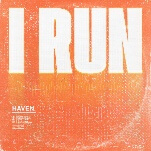Hum’s You’d Prefer An Astronaut is an overlooked masterpiece

Permanent Records is an ongoing closer look at the records that matter most.
Outside of niche circles, Hum is probably best known as “that one band from the car commercial.” In 1995, the band released You’d Prefer An Astronaut, its third full-length offering and major label debut. It was—and still is—an impeccably dense record, at least as far as a nine-track, traditionally packed LP is concerned. Among these hypnotic and soaring songs that pay homage to the mystery of outer space, Hum cracked the mainstream surface with “Stars,” a rollicking and emotive ballad that was used by Cadillac in 2008 to market a sedan. Mathematically speaking—and for any label executive concerned with a return on investments—the Cadillac commercial could be viewed foremost among Hum’s major coups. But Hum’s fans—who are as devoted and blindly unwavering as any—see things differently: Hum should have been a much bigger band.
Matt Talbott, Tim Lash, Jeff Dimpsey, and Bryan St. Pere were a guitar-rock foursome that formed and released four records in the ’90s, an era when guitar-rock was ubiquitous. Just as Talbott’s flat, brooding voice was often lost in a sea of washy static on all of Hum’s records, the band itself came to embody a footnote in a time defined by Billy Corgans, Kurt Cobains, and Billie Joe Armstrongs. Hum’s contribution to the ’90s alt-rock canon has only ballooned in its isolated realm, though. Since Hum’s first reunion in 2003, legions of newer bands have capitalized on the shoegaze-inspired riffage and big, resounding soundscapes that gave You’d Prefer An Astronaut an other-worldly quality. The overarching theme of Hum’s life as a band is a story of subtle impact: Just like the band’s music, which always offered a slow-crawling march toward auditory bliss, Hum’s ascent to notoriety was markedly quiet, and happened largely after it was dropped by its label, RCA, and called it quits.
Talbott says he can’t really recall when Hum first got together. “I don’t really know,” he said in a 2011 interview with BalconyTV. His band could have formed in “’90 or ’89, or ’91” he stumbles, adding that “Our first record came out in ’93, or something like that.” As a matter of historical record, however, Hum’s debut album, Fillet Show, was released in 1991 on Twelve Inch Records, a small-town label based in Champaign, Illinois, the band’s hometown. Hum’s sound had a hardened edge at first, which can probably be chalked up to the members’ youth, or the way in which young men in bands often favor distortion over thoughtfulness. But glimmers of Hum’s later milieu often peaked through the din of punk-charged songs, especially on standouts like “Detassler” and “I Like It.”
After the release of the Sundress and Hello Kitty/Roar I’m A Tiger EPs, which deliver a dose of rowdy college rock, Hum gradually inched away from a threadbare rock ’n’ roll style. It parted ways with guitarist Andy Switzky, the band’s original creative force and lead vocalist. Hum then recruited Lash, a regular in Champaign’s college alt-rock scene, to replace Switzky on guitar. Soon after, Talbott became the band’s singer, and Hum began to write songs that were a bit slower and more introspective. Electra 2000, released in 1993, homes in on the style for which Hum is ultimately revered. This record is full of deeply textured songs that brim with emotive heaviness: One can cite “Shovel” and “Pewter,” among Electra 2000’s standouts, but there’s also the ultra-downtrodden “Diffuse,” which uses drudgery and powerful drums to create a pummeling wave of sound. There’s still some semblance of playfulness on Electra, however: On the track “Pinch & Roll,” Talbott’s screams are full of disaffected angst as he calls himself a “dirty old man” who pees on himself. Moreover, the masterful chords of the record’s opener, “Iron Clad Lou,” are about as raucous and catchy as anything released in the ’90s.
While the lyrics on Electra 2000 still largely reflect a nerdy, self-effacing vibe, the record also introduced much of the scientific imagery and subject matter that prevailed on the band’s later releases. And by the time You’d Prefer An Astronaut released in 1995, Hum had become a fully realized entity, a band completely set apart from the trappings of traditional alt-rock. This is immediately clear on the album’s first track, “Little Dipper”: The song is a study in deep, atmospheric droning and rumbling bass, but most importantly—and above all else—it’s a study in feeling. The tune not only sets a precedent for the rest of You’d Prefer An Astronaut, but also for everything Hum released after 1995. With its weird, lyrical musings on a “blue protective eye” and the concept of sleeping “under glass,” “Little Dipper” represents something of an ethos or mission statement for the band itself: It seems to convey, quite simply, that Hum’s dense, floating guitar-work beckons one to sit in a trance. Rather than sing the lyrics aloud, listeners are probably best suited to stand quietly and listen, letting their brains teem with activity and their skin tighten with goosebumps.







































